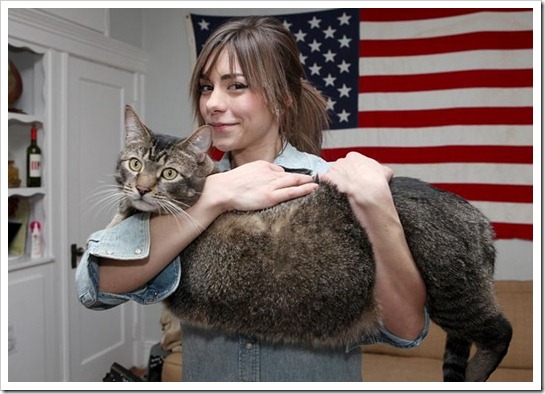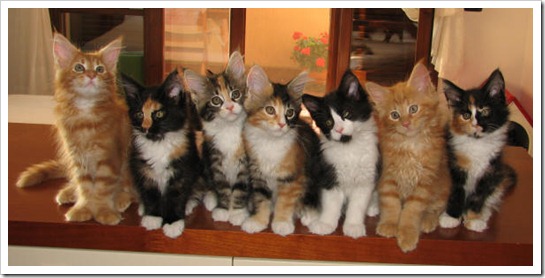I remember when I was beginning to learn Italian that I frequently experienced moments of confusion over what should have been the simplest of things. Sound familiar?
One of those theoretically ‘simple’ things was the use of molto. Let’s have at look at it’s various translations, and some examples of how we use it:
1. when used as an adverb molto DOES NOT CHANGE:
molto = very: questa torta è molto buona (this cake is very good)
molto = much: sì, è buona, ma non devo mangiare molto (yes, it’s good, but I mustn’t eat much)
molto = a lot: però, mi piace molto (however, I like it a lot)
the following example uses the adverb molto twice, each one having a different meaning in English:
siamo molto stanchi perché abbiamo camminato molto (we are very tired because we walked a lot)
 |
| un gatto molto grande = a very big cat |
2. when used as an adjective molto CHANGES ITS ENDING according to the noun it refers to:
In the following examples we’ll see how this works in practice: molto = much/many/a lot of: c’erano molte persone alla festa? (were there a lot of people at the party?), sì, ma c’erano sopratutto molti ragazzi (yes, but there were especially a lot of boys). Notice how molto becomes molte (feminine plural) when referring to persone (people) which is a feminine plural word, and molti (masculine plural) when referring to ragazzi which is a masculine plural word.
Here’s another example:
è avanzata molta pasta? (is there a lot of pasta left?) No, ma c’è molto sugo (No, but there’s a lot of sauce). In the first part of the sentence we used molta, because it refers to pasta which is feminine singular, whilst in the reply we used molto because it refers to sugo which is masculine singular
 |
| molti gatti = a lot of cats |
Now a couple of examples in which molto is used twice in the same sentence, once as an adverb and once as an adjective:
abbiamo lavorato molto perché avevamo molte cose da finire prima di partire (we worked a lot because we had a lot of things to finish before leaving): the first molto is an adverb (a lot) so it doesn’t change. The second molte is an adjective (a lot of) which refers to cose (things), a feminine plural word, therefore it changes its ending accordingly
notice the subtle key differences in the examples above: molto (adverb) = a lot, and molto/i/a/e + adjective = a lot of
Lucia e Giovanna sono molto stanche perché hanno camminato per molti chilometri (Lucia and Giovanna are very tired because they walked for many kilometres): once again, in this example the first molto (very) is an adverb, whilst the second one, molti (many), is an adjective referring to chilometri (kilometres – masculine plural).
You can find some more examples of the use of molto in THIS BLOG
Be sure to leave a comment if you have any questions or need further clarification, va bene?


Comments:
sarah:
I’m confused about how to use it if there is both a verb and a noun within the sentence?
for example my textbook states that to say I watch a lot of tv you say guardo molto la tv. The molto here I suppose does ‘not’ follow the noun otherwise it would have been guardo ‘molta’ la tv.
Given this I’m confused as to how I would say: I ask a lot of questions.
Would this be faccio molte domande or faccio molto domande?
Grazie
Professor Lee:
@sarah The key is to know the part of speech: adjective vs. adverb. When molto doesn’t change form, it is the adverb, which modifies a verb, adjective or another adverb as in English. When it is an adjective, then the the word changes form and agrees with the noun it is modifying in number and gender.
Serena:
@Professor Lee Salve Professor Lee!
Grazie per il contributo. Sì, l’avverbio non cambia, è invariabile, mentre l’aggettivo cambia, è variabile. Ma per molte persone questi sono tecnicismi astratti che non hanno alcun senso. Molti di noi hanno invece bisogno degli esempi pratici per imparare.
Saluti da Serena
Bernadette Manning:
@Professor Lee Found this information very helpful –
Molto utile ?
Ton Kuipers:
@sarah Thanks,
This explanation (the difference when used as an adverb or as an adjective) is very useful.
Duolingo lacks unfortunately the grammar explanations.
Lisa:
Thank you so much for explaining this so clearly. It’s confused me for years, why molto sometimes, but molti, molte, etc. other times. Finally I am starting to understand!
Katie:
In the sentence, molto depends on what you are modifying. In the sentence sarah stated, it modifies the verb, so it would be purely molto. But if it is modifying TVs, as if you said “there are a lot of TVs,” it would be molta.
Serena:
@Katie Salve Katie, molto brava! However, TVs is plural (televisioni), so it would be molte (feminine plural), not molta (feminine singular)
Saluti da Serena
Katie:
It would also be molte domande
Jean Vũ:
Thank you so so so much for this article my life is complete.
Michael:
This was helpful, makes lots of sense and accords with what I have read in textbooks. Thank you!
emilia:
which words follow the same pattern as molto?
Serena:
@emilia Salve Emilia!
Ci sono varie parole che possono essere sia aggettivi che avverbi, fra questi: tanto e poco.
Saluti da Serena
Mohammad:
Grazie
Era veramente utile
Geoff:
@Mohammad Non c’è di che Mohammad! 🙂
Zaid:
Many thanks. simple and informative
Mahtab:
Thank you
Very useful
Geoff:
@Mahtab Non c’è di che! you’re welcome 🙂
M.A CESTARO:
When you are discribing a view from a window, and whether it’s a nice view or not, can you say
La mia casa non ha molta vista.
Serena:
@M.A CESTARO Salve!
“La mia casa non ha molta vista” è una frase un po’ ambigua. Una forma più corretta sarebbe “dalla mia casa non c’è molta vista”.
Vedi questi esempi del dizionario Treccani: “dalla finestra si gode un’ampia vista sul mare”; “c’è una bella vista della pianura sottostante”.
Saluti da Serena
Andrew Rubens:
Ciao! Vedo spesso l’usaggio di “molta fame” e.g. “ho molta fame”. Ma per essere 100% correto dobbiamo usare “molto” in questo caso, no? Grazie!
Serena:
@Andrew Rubens Salve Andrew!
L’uso di ‘molta fame’ è corretto. ‘Fame’ è una parola femminile, e in questa frase, ‘molta’ non è un avverbio, ma un aggettivo che si riferisce alla parola ‘fame’, descrive la grandezza della fame.
Saluti da Serena